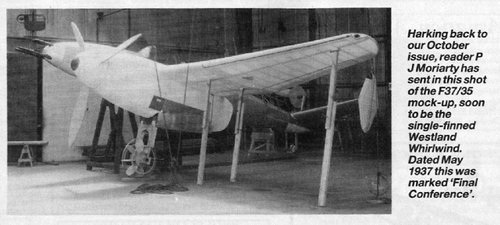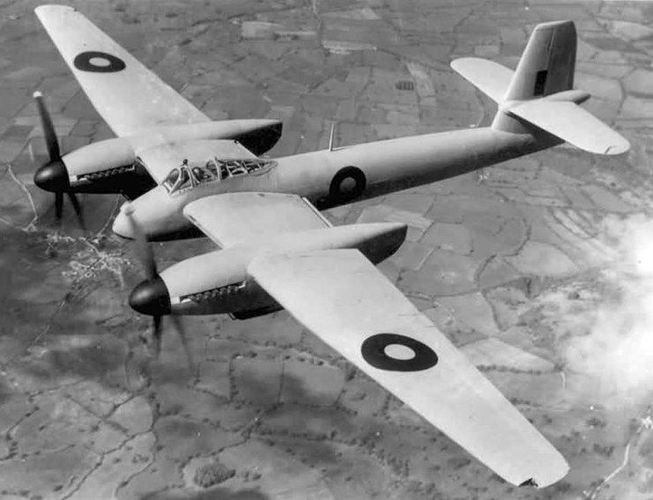Hi Zen,
This is rather interesting, if correct then the propeller issue is the major factor.
Basically, the video makes an attempt at conveying the point made here:
» Department for Arm-Waving Aerodynamics | Recreating an Unrecognised Fighter of WW2

www.whirlwindfighterproject.co.uk
This is turn is largely based on this table:
Unfortunately, the graphics do not accurately reflect the data from the table, and some data points that don't fit the linear relationship so well have been left out, in addition to some errors I would attribute to the poor legibility of the original scan.
However, the bigger problem with the interpretation given on the site is that the original table does not state that the altitudes given are indeed the altitudes of the highest top speed, which is the premise the author of the referenced article uses for his analysis.
The author also doesn't understand that the static full throttle height in forward flight is increased by the ram pressure when an aircraft is, like the Spitfire, using a forward-facing air intake:
Looking around, DAWA found the case of the Spitfire I. The manufacturer’s full throttle Height for the Merlin III was 16,250 feet at original rating, but the Spit I reached its maximum speed at around 19,000 feet (2,750 feet higher).
This made DAWA realise that altitude performance wasn’t exclusively linked to engine performance – though conventional wisdom at the time had it as such.
This increase in full throttle height is in fact perfectly normal, and on wwiiaircraftperformance.com, there are in fact many test reports in which the boost pressure is tabulated along with speed and altitude, showing that the speed only dropped off with altitude when boost pressure did.
As the author refers to the data from the "propeller table" as confirmation for his hypothesis that aircraft can reach their highest top speeds above their full throttle height due to compressibility-related propeller issues, it's worth noting that the table does in fact show that all speeds were achieved close to the full throttle height, as the quoted power in all cases is within a 20 HP range, and the two lowest powers belong to the two lowest altitudes in the test, so the aircraft was clearly flown close to or below the full throttle height for all data points, and the exact altitude is not a test result but probably was chosen by the pilot for the test run, relying on his boost gauge to make sure he got the full nominal boost pressure.
However, that doesn't mean that the idea that the production propeller was so thick it lost efficiency at high Mach numbers is wrong. However, that would not lead to the aircraft achieving its top speed above its full throttle height, as going higher and faster increases the Mach number and inevitably increases the efficiency losses and, accordingly, [edit: decreases] top speed.
So, I'd say this guy behind DAWA has identified an interesting aspect of Whirlwind performance, and maybe one where the propeller the series-production Whirlwinds received did in fact harm the type's performance, but my preliminary impression is that the detailed reasons for this are probably not reflected perfectly accurately on the DAWA page.
Regards,
Henning (HoHun)





